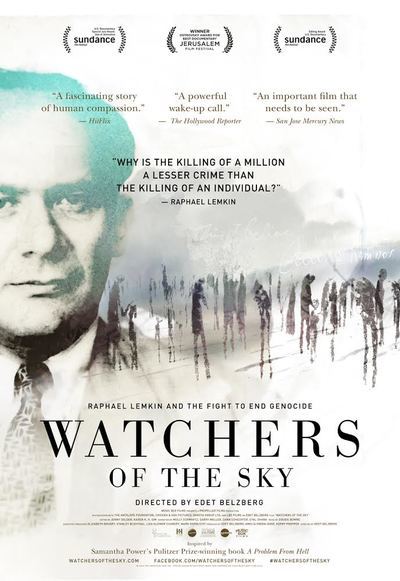 Six decades after he first coined the term genocide, Raphael Lemkin’s life has made it to the silver screen. In Watchers of the Sky director Edet Belzberg takes viewers through the efforts of Lemkin to get the crime of genocide recognized by the international community and the United Nations.
Six decades after he first coined the term genocide, Raphael Lemkin’s life has made it to the silver screen. In Watchers of the Sky director Edet Belzberg takes viewers through the efforts of Lemkin to get the crime of genocide recognized by the international community and the United Nations.
Throughout the movie, activists, scholars and experts share their reflections on the legacy of Lemkin’s tireless dedication to pursuing justice for victims of atrocities around the world. Among those interviewed is Samantha Power, U.S. Ambassador to the UN and author of A Problem from Hell, which served as an inspiration for the documentary. more...

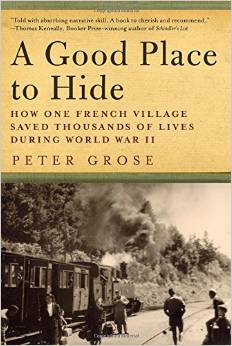
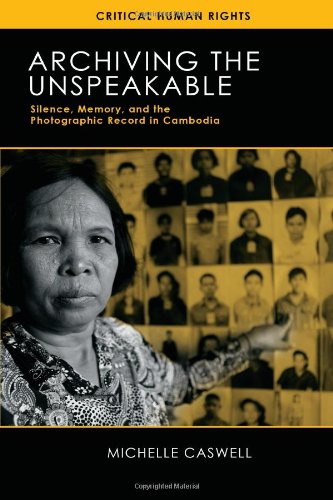 Roughly 1.7 million people died in Cambodia from untreated disease, starvation, and execution during the Khmer Rouge reign of less than four years in the late 1970s. The regime’s brutality has come to be symbolized by the multitude of black-and-white mug shots of prisoners taken at the notorious Tuol Sleng prison, where thousands of “enemies of the state” were tortured before being sent to the Killing Fields. In Archiving the Unspeakable, Michelle Caswell traces the social life of these photographic records through the lens of archival studies and elucidates how, paradoxically, they have become agents of silence and witnessing, human rights and injustice as they are deployed at various moments in time and space. From their creation as Khmer Rouge administrative records to their transformation beginning in 1979 into museum displays, archival collections, and databases, the mug shots are key components in an ongoing drama of unimaginable human suffering.
Roughly 1.7 million people died in Cambodia from untreated disease, starvation, and execution during the Khmer Rouge reign of less than four years in the late 1970s. The regime’s brutality has come to be symbolized by the multitude of black-and-white mug shots of prisoners taken at the notorious Tuol Sleng prison, where thousands of “enemies of the state” were tortured before being sent to the Killing Fields. In Archiving the Unspeakable, Michelle Caswell traces the social life of these photographic records through the lens of archival studies and elucidates how, paradoxically, they have become agents of silence and witnessing, human rights and injustice as they are deployed at various moments in time and space. From their creation as Khmer Rouge administrative records to their transformation beginning in 1979 into museum displays, archival collections, and databases, the mug shots are key components in an ongoing drama of unimaginable human suffering.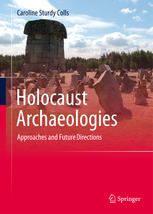 Holocaust Archaeologies: Approaches and Future Directions aims to move archaeological research concerning the Holocaust forward through a discussion of the variety of the political, social, ethical and religious issues that surround investigations of this period and by considering how to address them. It considers the various reasons why archaeological investigations may take place and what issues will be brought to bear when fieldwork is suggested. It presents an interdisciplinary methodology in order to demonstrate how archaeology can (uniquely) contribute to the history of this period. Case examples are used throughout the book in order to contextualize prevalent themes and a variety of geographically and typologically diverse sites throughout Europe are discussed. This book challenges many of the widely held perceptions concerning the Holocaust, including the idea that it was solely an Eastern European phenomena centered on Auschwitz and the belief that other sites connected to it were largely destroyed or are well-known. The typologically, temporally and spatial diverse body of physical evidence pertaining to this period is presented and future possibilities for investigation of it are discussed. Finally, the volume concludes by discussing issues relating to the “re-presentation” of the Holocaust and the impact of this on commemoration, heritage management and education. This discussion is a timely one as we enter an age without survivors and questions are raised about how to educate future generations about these events in their absence.
Holocaust Archaeologies: Approaches and Future Directions aims to move archaeological research concerning the Holocaust forward through a discussion of the variety of the political, social, ethical and religious issues that surround investigations of this period and by considering how to address them. It considers the various reasons why archaeological investigations may take place and what issues will be brought to bear when fieldwork is suggested. It presents an interdisciplinary methodology in order to demonstrate how archaeology can (uniquely) contribute to the history of this period. Case examples are used throughout the book in order to contextualize prevalent themes and a variety of geographically and typologically diverse sites throughout Europe are discussed. This book challenges many of the widely held perceptions concerning the Holocaust, including the idea that it was solely an Eastern European phenomena centered on Auschwitz and the belief that other sites connected to it were largely destroyed or are well-known. The typologically, temporally and spatial diverse body of physical evidence pertaining to this period is presented and future possibilities for investigation of it are discussed. Finally, the volume concludes by discussing issues relating to the “re-presentation” of the Holocaust and the impact of this on commemoration, heritage management and education. This discussion is a timely one as we enter an age without survivors and questions are raised about how to educate future generations about these events in their absence.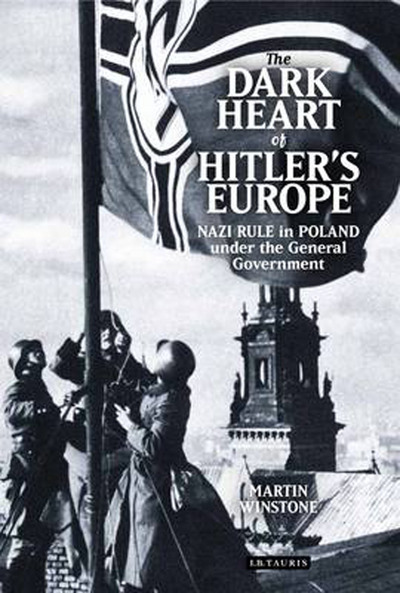 Even amidst the horrors of Nazi rule in Europe, the tragic history of the General Government – the Nazi colony created out of the historic core of Poland, including Warsaw and Krakow, following the German and Soviet invasion of 1939 – stands out. Separate from but ruled by Germany through a brutal and corrupt regime headed by the vain and callous Hans Frank, this was indeed the dark heart of Hitler’s empire. As the principal ‘racial laboratory’ of the Third Reich, the General Government was the site of Aktion Reinhard, the largest killing operation of the Holocaust, and of a campaign of terror and ethnic cleansing against Poles which was intended to be a template for the rest of eastern Europe.
Even amidst the horrors of Nazi rule in Europe, the tragic history of the General Government – the Nazi colony created out of the historic core of Poland, including Warsaw and Krakow, following the German and Soviet invasion of 1939 – stands out. Separate from but ruled by Germany through a brutal and corrupt regime headed by the vain and callous Hans Frank, this was indeed the dark heart of Hitler’s empire. As the principal ‘racial laboratory’ of the Third Reich, the General Government was the site of Aktion Reinhard, the largest killing operation of the Holocaust, and of a campaign of terror and ethnic cleansing against Poles which was intended to be a template for the rest of eastern Europe. The Bloomsbury Companion to Holocaust Literature is a comprehensive reference resource including a wealth of critical material on a diverse range of topics within the literary study of Holocaust writing. At its centre is a series of specially commissioned essays by leading scholars within the field: these address genre-specific issues such as the question of biographical and historical truth in Holocaust testimony, as well as broader topics including the politics of Holocaust representation and the validity of comparative approaches to the Holocaust in literature and criticism.
The Bloomsbury Companion to Holocaust Literature is a comprehensive reference resource including a wealth of critical material on a diverse range of topics within the literary study of Holocaust writing. At its centre is a series of specially commissioned essays by leading scholars within the field: these address genre-specific issues such as the question of biographical and historical truth in Holocaust testimony, as well as broader topics including the politics of Holocaust representation and the validity of comparative approaches to the Holocaust in literature and criticism. Antisemitism from Muslims has become a serious issue in Western Europe, although not often acknowledged as such. Looking for insights into the views and rationales of young Muslims toward Jews, Günther Jikeli and his colleagues interviewed 117 ordinary Muslim men in London (chiefly of South Asian background), Paris (chiefly North African), and Berlin (chiefly Turkish).
Antisemitism from Muslims has become a serious issue in Western Europe, although not often acknowledged as such. Looking for insights into the views and rationales of young Muslims toward Jews, Günther Jikeli and his colleagues interviewed 117 ordinary Muslim men in London (chiefly of South Asian background), Paris (chiefly North African), and Berlin (chiefly Turkish). In Holocaust Memory Reframed, Jennifer Hansen-Glucklich examines representations in three museums: Israel’s Yad Vashem in Jerusalem, Germany’s Jewish Museum in Berlin, and the United States Holocaust Memorial Museum in Washington, D.C. She describes a variety of visually striking media, including architecture, photography exhibits, artifact displays, and video installations in order to explain the aesthetic techniques that the museums employ. As she interprets the exhibits, Hansen-Glucklich clarifies how museums communicate Holocaust narratives within the historical and cultural contexts specific to Germany, Israel, and the United States.
In Holocaust Memory Reframed, Jennifer Hansen-Glucklich examines representations in three museums: Israel’s Yad Vashem in Jerusalem, Germany’s Jewish Museum in Berlin, and the United States Holocaust Memorial Museum in Washington, D.C. She describes a variety of visually striking media, including architecture, photography exhibits, artifact displays, and video installations in order to explain the aesthetic techniques that the museums employ. As she interprets the exhibits, Hansen-Glucklich clarifies how museums communicate Holocaust narratives within the historical and cultural contexts specific to Germany, Israel, and the United States. In this sweeping, definitive work, leading human rights scholar David M. Crowe offers an unflinching look at the long and troubled history of genocide and war crimes. From atrocities in the ancient world to more recent horrors in Nazi Germany, Cambodia, and Rwanda, Crowe reveals not only the disturbing consistency they have shown over time, but also the often heroic efforts that nations and individuals have made to break seemingly intractable patterns of violence and retribution – in particular, the struggle to create a universally accepted body of international humanitarian law. He traces the emergence of the idea of ‘just war,’ early laws of war, the first Geneva Conventions, the Hague peace conferences, and the efforts following World Wars I and II to bring to justice those who violated international law.
In this sweeping, definitive work, leading human rights scholar David M. Crowe offers an unflinching look at the long and troubled history of genocide and war crimes. From atrocities in the ancient world to more recent horrors in Nazi Germany, Cambodia, and Rwanda, Crowe reveals not only the disturbing consistency they have shown over time, but also the often heroic efforts that nations and individuals have made to break seemingly intractable patterns of violence and retribution – in particular, the struggle to create a universally accepted body of international humanitarian law. He traces the emergence of the idea of ‘just war,’ early laws of war, the first Geneva Conventions, the Hague peace conferences, and the efforts following World Wars I and II to bring to justice those who violated international law. Standing on Polish soil is to stand upon the fertile ground of memory. Poles see themselves as a people who have struggled to maintain their national identity amidst occupation and oppression. The Polish past is negotiated on a daily basis between the generations of Poles who lived (or grew up) during World War II, those who lived during the Soviet regime, and those who have come of age after the fall of Communism. All three of these groups have grown up with the narrative of Poles as rescuers, resisters and martyrs. This idea was shaped during the Soviet years and reinforced through Polish popular culture.
Standing on Polish soil is to stand upon the fertile ground of memory. Poles see themselves as a people who have struggled to maintain their national identity amidst occupation and oppression. The Polish past is negotiated on a daily basis between the generations of Poles who lived (or grew up) during World War II, those who lived during the Soviet regime, and those who have come of age after the fall of Communism. All three of these groups have grown up with the narrative of Poles as rescuers, resisters and martyrs. This idea was shaped during the Soviet years and reinforced through Polish popular culture.